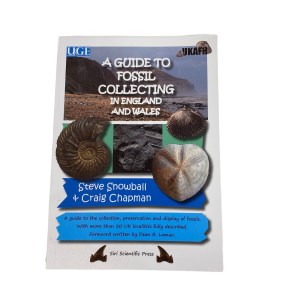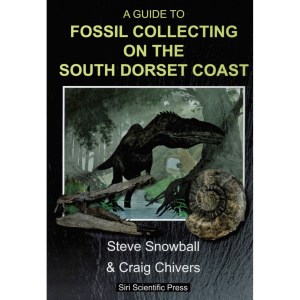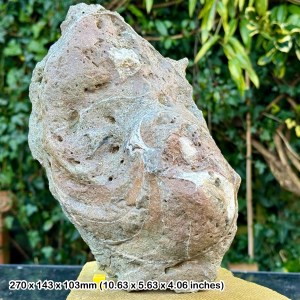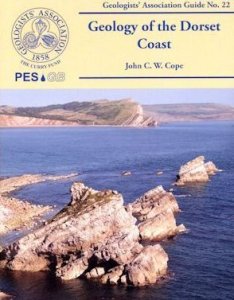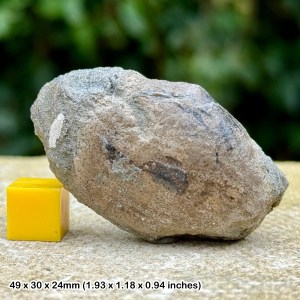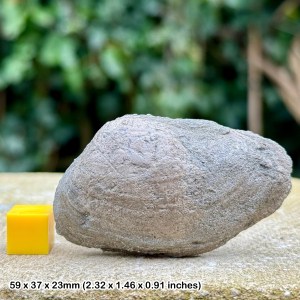Ringstead Bay is a wonderful location, with rocks and fossils from the Corallian, Kimmeridge Clay, Purbeck Beds and Portland Beds to be found. The site consists mostly of Kimmeridge Clay from the Upper Jurassic. It is rich in fossils and with easy parking, toilets and refreshments nearby; it’s an ideal, safe location for the family. The site is productive in either direction from the access point. This location is also just a short walk away from other good sites and makes for an ideal day trip.
DIRECTIONS
♦ Ringstead Bay and car park can be accessed by taking the A353 out of Weymouth, through Osmington village and turning right (signposted Ringstead Bay & Beach Cafe) before Poxwell village. Wind down the narrow lane until the road forks. Bear right onto the old toll road and descend to the coast
♦ There is a daily rate charge at the car park (April to November) and the beach café/shop is open during the summer season, with toilets close by.
♦ Ref: 50.63110°N, 2.35129°W
♦ Postcode: DT2 8NG
PROFILE INFO
FIND FREQUENCY: ♦♦♦♦ – Fossils at Ringstead Bay are common. The giant oysters (Deltoideum delta) are found in the cliffs and foreshore. Other fossils also occur but the site is certainly more productive during scouring conditions in the winter months.
CHILDREN: ♦♦♦♦ – An excellent site for children. They can usually pick up various fossils along the coast and the beautiful location also makes a wonderful family walk.
ACCESS: ♦♦♦♦♦ – Access is very easy with parking at the car park. From the car park, walk towards the beach, bearing right and then descend to the beach, by way of a concrete slipway. . Turn left (east) for the high Kimmeridge Clay cliffs and fossils from this formation and from the Purbeck and Portland Formations. Turn left for low Kimmerdge Clay cliffs and Corallian rocks. However, the best time to visit is after winter storms.
TYPE: – Fossils can be found on the foreshore, which. can often be simply picked up, but fossils can also be found in the cliff base, especially after rain and can be gently prised from the clay matrix.
FOSSIL HUNTING
Turning right (west) walk towards Bran Point, the nearest visible headland. Here, the rocks are of Corallian age. The first feature of interest along this section is the exposure of the Sandsfoot Formation, (previously known as the Ringstead Coral Bed). This marks the junction between the older Corallian rocks with the overlying, younger Kimmeridge Clay. The junction is marked by the presence of large, lopsided brachiopod of the variety Torquirhynchia inconstans and is known as the Inconstans Bed. The Kimmeridge Clay crops out in the low cliffs near the Coral Bed and the scattered shells of the oyster Deltoideum delta are a common occurrence at Ringstead Bay.

At this location, the Corallian consists of brown and dark green sandy clay, often with rich oolitic ironstone present. Occasionally, isolated corals can be found but in the main, colonial corals form part of a thin but distinguishable layer of limestone, protruding from the low cliffs at beach level. The layer comprises corals, bivalves and other fauna often found in broken rocks beneath the low, slumped cliffs at this section. The various fossil corals, include the solitary coral Thecosmilia annularis and other reef corals such as Thamnasteria and Protoseis.
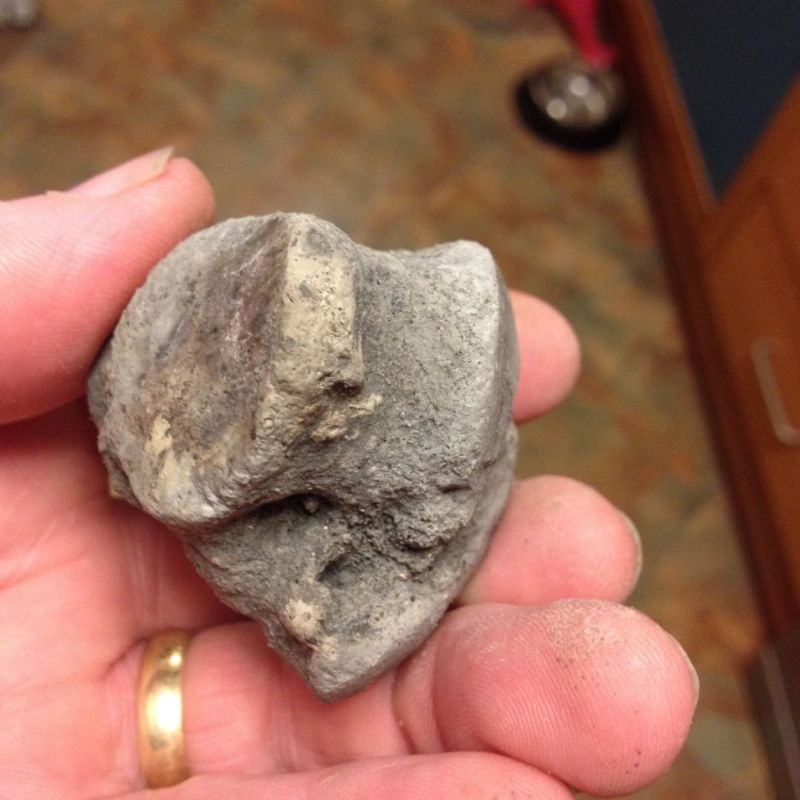
On the foreshore and as off-shore reefs, especially at low tide, can be seen the prominent Corallian rocks of the Osmington Oolite Formation and Clavellata Formation, consisting of the worn surfaces of thousands of thick shells within an incredibly hard limestone. This rock extends out into the sea as a wave-cut platform with distinct reefs. The shells mostly belong to the large marine bivalve, Myophorella clavellata are very common in Corallian rocks between Ringstead and Weymouth. These shells are very difficult to extract and collection should be left to isolated specimens and single, wave-worn specimens, which often turn up on the beach.

Walking left (east) from the access point, along the shingle beach towards White Nothe, past the small caravan site and rock armour, the tall cliffs of slumped, badly weathered Kimmeridge Clay forms the majority of the rock type found. The cliffs at the eastern end of the bay are known as Burning Cliff, due to a spontaneous combustion of the organic-rich bituminous oil shales within the clay. The fires burned from 1826 to 1830 but there has been no recent occurrence!
The Kimmeridge Clay here, from 153 Mya, is fossiliferous with ammonites (Pictonia densicostata, Rasenia cymodoce, Aulacostephanus sp., Amoeboceras (Nannocardioceras) sp.), bivalves (e.g. Lopha gregarea) and gastropods (including Bathrotomaria reticulata and Bourgetia). These are often quite fragile. Worm tubes (Cycloserpula intestinalis) are common finds. Large bivalves, Ctenostreon proboscideum, embedded in the rocks as partial specimens, are also frequently found. Marine reptile remains are rare but do occur.
High in the cliffs, east of Burning Cliff and west of Holworth House (and also frequently seen as slipped masses at beach level), are the strata of the Portland Limestone Formation and the basal part of the Purbeck Formation.
The rocks here are folded and faulted, forming a spectacular unconformity, with the Chalk dipping to the right and the Portland and Purbeck Beds dipping to the left. The fallen rocks occurring at beach level are worth exploring and often contain fossil shells.
GEOLOGY
The majority of rocks found at Ringstead Bay are of Kimmeridge Clay, forming tall, weathered cliff to the east and overlain by rocks from the Portland Limestone Formation and Purbeck Limestone Formation, both visible high up at the east end of the bay. To the west of the bay, the rocks are Corallian, comprising exposures of the Sandsfoot Formation, the Osmington Oolite Formation and Clavellata Formation.


SAFETY
Common sense when collecting at all locations should be used and prior knowledge of tide times is essential. Care should be taken of tides, especially during the winter months.
EQUIPMENT
Most fossils can be simply picked or gently prised from the clay using a steel point. Fossils can simply be lifted from the clay. The fossils can be very fragile, especially the ammonites, so separate containers filled with fine sand or tissue paper are ideal for safe transport. Any fallen blocks of Portland or Purbeck rocks can be split with a geological hammer and chisel. Wear protective goggles if attempting this. Do not hammer or dig into the cliff, as this is an SSSI site.
ACCESS RIGHTS
This site is an SSSI and forms part of the UNESCO World Heritage Jurassic Coast. This means you can visit the site, but hammering the bedrock is not permitted. For full information about the reasons for the status of the site and restrictions please download the PDF from Natural England – SSSI Information – South Dorset
It is important to follow our ‘Code of Conduct’ when collecting fossils or visiting any site. Please also read our ‘Terms and Conditions‘
LINKS
♦ Buy Fossils, Crystals, Tools
♦ Location Discussions
♦ Deposits Magazine
♦ Join Fossil Hunts
♦ UK Fossils Network
-
A guide to fossil collecting in England and Wales
£24.20 -
A guide to fossil collecting on the South Dorset Coast
£23.80 -
Fossil gastropod – corallian formation, oxfordian, jurassic | ringstead bay, dorset, uk | genuine specimen with certificate
£48.00 -
Fossil gastropod – corallian formation, oxfordian, jurassic | ringstead bay, dorset, uk | genuine specimen with certificate
£60.00 -
Fossil nautilus – corallian formation, oxfordian, jurassic | ringstead bay, dorset, uk | genuine specimen with certificate
£72.00 -
Geology of the Dorset Coast (Geologists’ Association Guide No. 22.)
£21.50 -
Pleuromya uniformis bivalve fossil, jurassic coast (ringstead bay, dorset), kimmeridge clay *certificated*
£7.20 -
Pleuromya uniformis bivalve fossil, jurassic coast (ringstead bay, dorset), kimmeridge clay *certificated*
£7.20 -
Pleuromya uniformis bivalve fossil, jurassic coast (ringstead bay, dorset), kimmeridge clay *certificated*
£7.20


























































